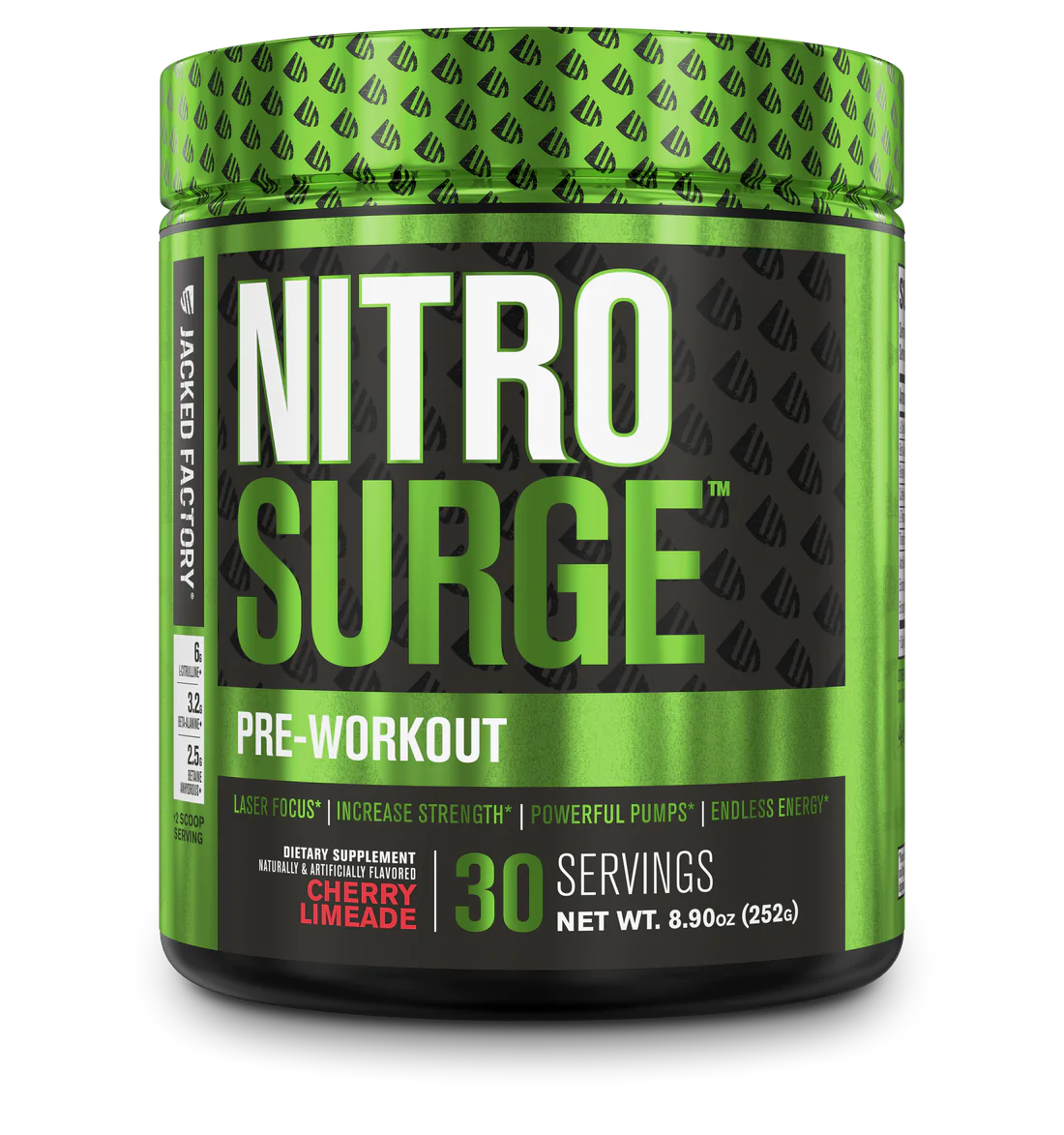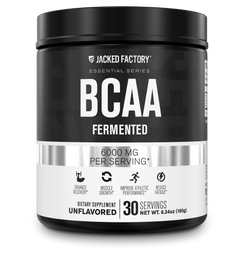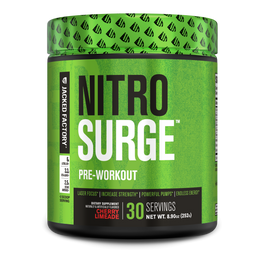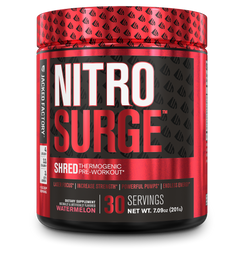The 5 Best Trap Exercises to Build Your Traps Fast!
What if we told you that the dumbbell/barbell shrug is not one of the best trap exercises? Far too often, bodybuilders and athletes finish their back workout with a few sets of dumbbell or barbell shrugs and call it a day for their trapezius muscles ("traps"). Not surprisingly, their traps don't reach their full potential.
But in many cases, the real problem usually isn't that you're doing the "wrong" trap exercises; rather, you may just tend to rely on other upper-back muscles to move the weight. The trapezius muscles can be tough to truly isolate since they work in concert with numerous other back muscles, namely the latissimus dorsi, rhomboids, and levator scapulae. As such, the best trap exercises are not as conventional as you might think.
Use the trap workout tips and exercises in this article to stop those poor back-training habits in their tracks and beef up your trapezius muscles!
Build Your Trap Muscles with These Simple Training Tweaks
The tough part about training your upper-back muscles is that you can't see the muscles working as you would when training muscles on the anterior side of the body. This is likely a major reason for trainees not being able to "feel" their trap muscles, especially the lower traps, contracting when doing certain exercises.
During the first few sets of your trap workout, close your eyes and really focus on feeling your traps working. The proverbial "mind-muscle connection" is crucial for upper back training. If you don't notice much tension in your traps when doing a dumbbell shrug or barbell shrug, odds are it's not doing much for the intended purpose.
So, how can you fix that? Well, there are several ways to place more emphasis on the lower and upper traps simply by adjusting things like your grip and torso lean/angle.
For instance, performing a basic barbell shrug or bent-over row may seem straightforward, but depending on how you hold the weight (e.g. overhand grip vs. underhand grip), at what angle you pull the weight towards your body, and the range of motion (ROM), you'll feel more tension in certain areas of your upper back.

That’s right — a simple rowing exercise can target the latissimus dorsi, teres major/minor, rhomboids, trapezius muscles, rear deltoids, or the erector spinae if you really want. So, targeting the traps doesn’t always equate to doing more exercises, just changing the execution of the foundational compound movements like barbell rows, deadlifts (especially with the trap bar), and rows on the cable machine.
Use Fractional Reps to Increase Tension in Your Lower, Middle, and Upper Traps
To have well-rounded trap development, it's sensible to implement “fractional reps” during certain movements, especially towards the end of a workout when your muscles are fatigued and you can't lift as much weight. What are fractional reps, you ask?
Essentially, they are partial reps done after completing a normal (full-ROM) set to muscular failure. Once you can't perform any more reps with a full ROM, you "squeeze" out as many more reps as possible with a partial ROM (the top half of that movement).
Fractional reps are especially useful for increasing the mind-muscle connection when training your traps. Depending on what exercises you're performing, the partial reps can place more emphasis on the lower, middle, or upper traps. Don't be afraid to experiment a bit and find that "sweet spot" where you feel your traps engaging optimally.
Is the Barbell Shrug Really One of the Best Trap Exercises?
Before we divulge the best trap exercises, let's quickly go over why the barbell shrug is arguably the overrated exercise for the traps. When you see gym-goers doing barbell shrugs (or rack pulls) with way too much weight, the range of motion is usually laughable. They shrug the barbell maybe a quarter of an inch each rep; it's really doing more for their ego than anything else.
Doing nothing but "heavy" barbell shrugs isn't the answer for a well-rounded set of trap muscles. There are several other exercises with much more functional and practical applications, notably the face pull, overhead shrug/squat, and upright row.
Also, just because a bodybuilder with massive traps does heavy shrugs doesn't necessarily mean that's why they have an impressive upper back. Many people with exceptional physiques achieve those results despite what they do.
Leave your ego at the door; use proper form and don't worry so much about how much weight is on the bar. You’ll be amazed at how little resistance you actually need to stimulate your traps.
The Best Trap Exercises (You’re Probably Not Doing)
Unlike limbs, though, it isn’t prudent to train upper-back muscles individually. Bodybuilders and gym-goers often compartmentalize their workouts in hopes of targeting one muscle group at a time, which is simply not how the human body works.
Your back is a cohesive network of muscles that more or less all serve to stabilize your spine, pull objects towards the body, and elevate the shoulder blades. Therefore, deadlifts, snatches, cleans, and bent-over rows will undoubtedly activate your trapezius muscles.
Lu Xiaojun and Dimitri Klokov are two well-documented Olympic weightlifters. There are some good videos of them, particularly slow-motion footage, doing less common exercises that can propel trapezius growth.
Here is a perfect example of the overhead squat and engaging the trap muscles: Overhead Squat Video
Note the lifter's mobility in that video; his head is "through the bar," which allows the weight to be central and stabilized by just his upper-back muscles.
That serves as a segue to our first trap exercise, the overhead shrug.
Overhead Shrug
Overhead shrugs are a great way to familiarize yourself with the initially awkward positioning of the bar when doing overhead squats. In most cases, all you'll need is an empty Olympic barbell to do overhead shrugs.
To get to the starting position, simply take a wide overhand grip on a barbell and press it over your head so that your arms are nearly locked out. The bar should be vertically parallel to your spine (just slightly towards the back of your head).
Now, you perform the same motion as you would when doing a standard barbell shrug by elevating your shoulder blades. Hold at the top of the movement briefly before lowering your shoulder blades back to the starting position. Your elbow joints should be static throughout the rep; let the traps do the raising and lowering of the bar.
Most may find the overhead squat and overhead shrug to be a little awkward at first, but with some mobility work, form practice, and persistence, these are easily two of the best trap exercises. They will also benefit your posture and core strength. Unfortunately, you won't be able to perform overhead trap exercises if you have a shoulder injury.
Face-Pull
The easiest way to define face pulls is like a row towards your face. Ideally, you should do these using a cable machine with a rope attachment, but a resistance band looped around an attachment point will suffice as well.
The execution is pretty straightforward; get into the starting position by taking an overhand grip on the rope attachment that's set near eye-level. Stand far enough away from the pulley so your arms reach full extension just before the weight stack moves.
Now, pull the rope towards your face until each hand goes just past your ears; keep your elbows flared (about a 75-degree angle from the floor) out to increase the range of motion and tension on the traps; hold briefly before slowly extending your arms back to the starting position.
Snatch-Grip Upright Row/High Pull
When you really want to target the upper traps, the snatch-grip upright row is tough to beat. It's the same as a standard upright row, but you'll want to use a barbell (or a smith machine) so you can take a wide enough overhand grip.
Stand with your feet shoulder-width apart and lean your upper body ever-so-slightly forward. Now, in a controlled manner, explode the bar up to your chin like you would when doing a hang clean but without flipping your wrists under the bar.
Here's a good video for demonstration: Snatch-Grip High Pulls
Trap Bar Deadlift
Similar to the snatch-grip upright row, stand with your feet shoulder-width apart inside of a loaded trap bar. Keep your spine neutral and use your hips to pull the bar up to your waist. Your traps will be static throughout the exercise, but they're working. You can also do shrugs using the trap bar for a nice change of pace now and then.
Farmer's Carry
The farmer's carry is often overlooked when training traps, but it's a great exercise to statically engage your upper back. (And let's be honest, who doesn't want to be better at hauling all their grocery bags up the stairs in one trip?) The beauty of farmer's carries is that you can do them with just about any relatively heavy objects with handles, whether it's kettlebells, dumbbells, or grocery bags.
All you need to do is hold them at your sides as you would in the starting position of a dumbbell shrug and walk in a straight line until your grip fails (or traps burn to the high heavens, whichever comes first). Generally, it's best to use a weight that's heavy enough so that you can't walk more than 50-100 meters per set.
Don't Neglect Trap Exercises on Back Day!
Isolating the traps can be tricky, especially if the rest of your upper back muscles are already fatigued. To bring up lagging trap muscles, start your back workouts with face pulls using the rope attachment on a pulley. Not only will this help loosen up your shoulder blades and lats, but it will "pre-exhaust" your trapezius before you start doing compound exercises like barbell rows and pull-ups.
And remember these trap workout tips we outlined earlier:
- Leave the ego at the door
- Use fractionated training
- ROM, grip style, and movement angle are all key variables to manipulate
Also, like most things in life, there is more than one way to your destination. Trap workouts are no exception. Many powerlifters, Olympic weightlifters, strongmen, and bodybuilders alike build massive trap muscles just by doing heavy deadlifts, snatches, cleans, and bent-over rows with varying grips. While the barbell shrug and dumbbell shrug tend to be the most popular trap exercises, they are usually done with sloppy form and way too much weight (thereby limiting the already nonexistent range of motion).
Change up your trap workout routine by incorporating exercises like the overhead shrug, explosive high-pull, and face pull as these are much more challenging than standard dumbbell/barbell shrugs.





